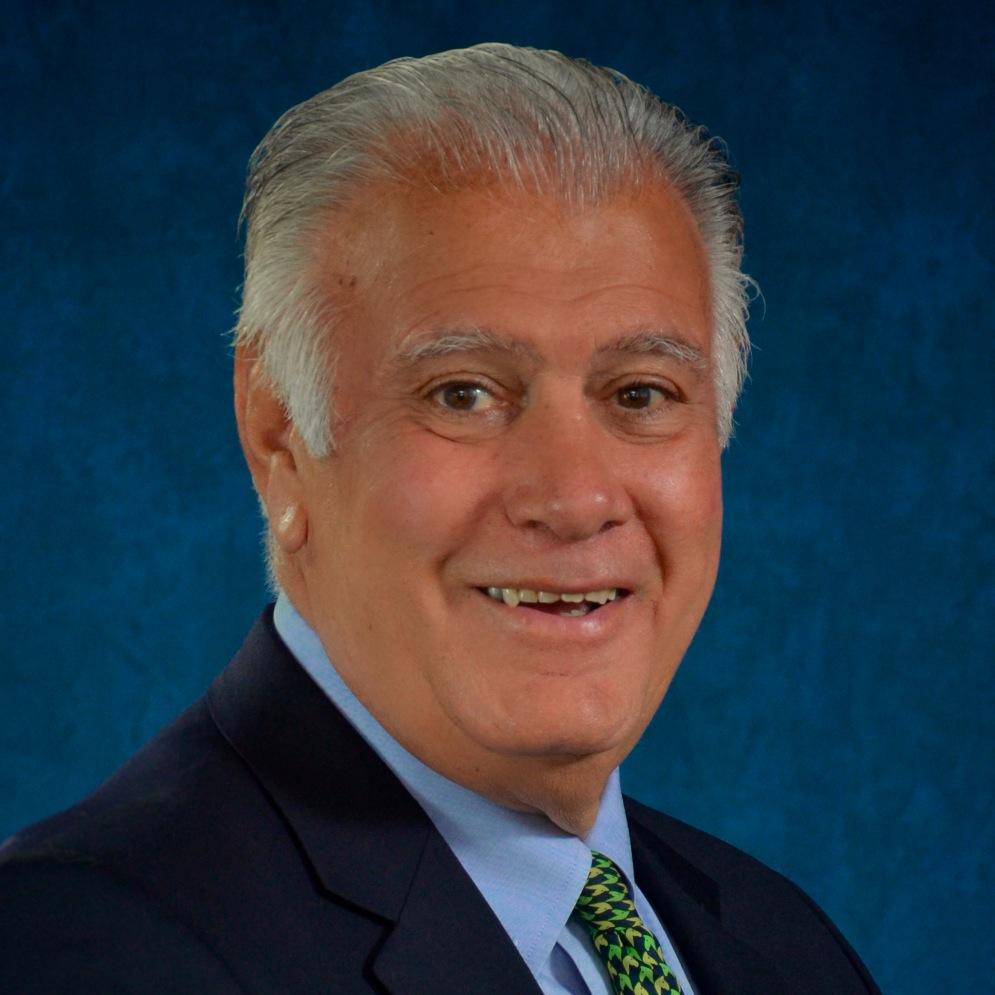Connecting state and local government leaders
Prescription drug abuse is also a huge problem across the region. Instead of more tough law enforcement, is a treatment-first approach the answer?
MONTPELIER, Vt. — Here in Vermont’s state capital and in the offices of governors, mayors, state police leaders, judges and public health officials throughout New England, a topic of particular focus this summer has been the drug abuse that’s sweeping the region.
Heroin, once stigmatized as only for needle-junkies, is of particular concern—cheap and readily available in strengths that allow snorting instead of shooting. Dealers from the Bronx and Brooklyn in New York City, Hartford, Connecticut, the Canadian province of Quebec and elsewhere make weekend trips to Rutland and other Vermont cities, peddling bags that “are cheaper than a hot fudge sundae at Ben and Jerry’s,” as one public health official put it.
Heroin use in New England has reached epidemic proportions, say people who are dealing with the problem. But while the diagnosis is easy, the cure is elusive: Should the focus be on choking off supply or suppressing demand? Should users be dispatched to jails and prisons, or be let off so long as they follow treatment programs? And what are the relative costs of competing approaches?
These were questions I addressed in interviews with officials in Massachusetts, Vermont and Maine, during a trip through New England this summer. All expressed deep concern about the ravages suffered not only by drug users, but also by their families and communities as the scourge has spread. And if no simple solutions emerged in these interviews, support seems to be growing for devoting more effort, and spending more money, to suppress demand and treat, not incarcerate, the addicted.
News of the Scourge
Every day, New England newspapers report more news about heroin and other addictive drugs.
On Aug. 19, for example, the Bangor Daily News’ lead story covered the sentencing of a user of heroin and oxycodone who’d received a methadone treatment 35 minutes before killing a school teacher in a car crash.
And the following day, the newspaper covered a state announcement that overdose deaths were continuing to surge in Maine, with 105 people having succumbed in the first half of 2015.
“These numbers are terribly distressing,” Attorney General Janet Mills said in the state’s news announcement. “The first six months of 2015 show that this crisis continues unabated and we—everyone in the state of Maine—still have a great deal of work to do to get this under control. We need to address this crisis from all angles: education, prevention, treatment and interdiction.”
In neighboring states, drug busts are regular fare for newspapers such as The Boston Globe, The Berkshire Eagle of Pittsfield, Massachusetts; the New Hampshire Union Leader in Manchester, the state’s largest city; and in Vermont, the Burlington Free Press and the Rutland Herald. The news outlets also regularly report high levels of officials’ concern with what many call an “epidemic.”

In early August, for example, the New Hampshire Union Leader reported on demands by Manchester Mayor Ted Gatsas that the state’s governor, Maggie Hassan, declare a public health state of emergency over the “heroin epidemic” in Manchester and the rest of the state.
Gatsas hoped such a declaration would facilitate reprogramming of federal funds to finance a new drug court in the state—following on models in other jurisdictions that have taken minor drug possession cases out of the frequently slow and often harshly punitive regular courts. Hassan rejected the mayor’s request, concluding that the reprogramming could not be achieved but said she agreed “that this epidemic is an emergency.”
That addiction to heroin and prescription opioids such as oxycodone has reached “epidemic” levels has become widely accepted ever since Vermont Gov. Peter Shumlin last year devoted his entire State of the State address to the issue. His speech made national news, elevating the addiction problem’s visibility in New England and beyond.
Media attention included a detailed, investigative report in The New York Times in February 2014, about heroin trafficking in Rutland, one of the epicenters of the Vermont drug trade, and an even more comprehensive, and widely circulated, report on Vermont’s heroin problem published in April 2014 in Rolling Stone.
That New England is particularly suffering from the spread of cheap heroin was confirmed when the federal Drug Enforcement Administration this spring issued a “National Heroin Threat Assessment.” The DEA reported that in 2013, 8,620 Americans died from heroin-related overdoses, nearly triple the number in 2010.
Meanwhile, in Maine, Gov. Paul LePage has announced that he would convene a Drug Summit on Aug. 26. His initiative came shortly after Portland, the state’s largest city, reported 14 heroin overdoses in a 24-hour period. But the summit idea was soon enmeshed in political controversy, as Democratic House Speaker Mark Eves accused the governor of contributing to the heroin problem by focusing too much on law enforcement and not enough on treatment.
Eves complained, for example, in his Aug. 7 letter about LePage’s refusal to allow expansion of Medicaid which, he said, would have funded treatment for thousands of the state’s addicts.
As the summit has approached, critics complained that the invitation list is overloaded with law enforcement officials, at the expense of treatment experts. And Maine’s Independent U.S. senator, Angus King, declared he would convene his own drug roundtable—the day before LePage’s summit—in cooperation with federal drug policy director Michael Botticelli, to discuss what steps the federal government could take. King’s meeting was more focused on treatment than on law enforcement.
More than a year and a half after Shumlin’s dramatic speech, the drumbeat of New England officials’ concern seems finally to have caught the attention of the White House. On Aug. 17, Botticelli’s Office of National Drug Control Policy pledged to spend $2.5 million to hire public safety and public health coordinators in New England and four other Northeast regions: Appalachia, Philadelphia/Camden, New York/New Jersey and Washington/Baltimore. The focus of the effort, the White House said, will be on treatment, not punishment, of addicts.
The amount is, of course, a tiny sliver of the $21.5 billion the government spends to fight drug abuse each year. Manchester’s Mayor Gatsas was among those who said the White House was making more of a gesture than a serious effort.
Addressing the Problem
Interviews in New England this summer revealed the continuing split between those, like LePage, who focus on law enforcement to address the supply side of the addiction problem, and those, like the White House, who want to reduce demand by focusing on treatment and education.
To a person, all of these public health and law enforcement authorities also reflected on the important role that abuse of prescription painkillers have played in hooking people on drugs and acting as precursors to the heroin epidemic.
Opioid drugs like oxycontin may have been designed as slow-release remedies to treat pain with just two pills a day, but people soon discovered that they could be crushed and consumed all at once to achieve a rush of euphoria. Soon, pain treatment centers sprung up, where corrupt doctors could issue prescriptions with little or no requirement that the “patient” demonstrate any real level of pain. “Doctor-shopping” became common, as addicts and dealers sought to increase their supplies.
The trail of corruption and addiction is told in a book by Barry Meier, a New York Times reporter, titled “Pain Killer: A ‘Wonder’ Drug’s Trail of Addiction and Death.” First issued in 2003 by Rodale Press, and updated in 2013, the book covers the invention of OxyContin, the powerful time-release painkiller, by Purdue Pharma and the vigorous efforts of the company to spread its use and to fight off critics who observed and lodged complaints about the drug’s highly addictive properties.
The drug met a need increasingly recognized by medical authorities. Pain, once seen as a routine side-effect of treatments, became seen as a symptom needing treatment. Federal authorities, hospitals and clinics all began calling it the “Fifth Vital Sign.” In routine physical therapy sessions this summer, for example, I am always asked to rate my pain level on a scale of 1 to 10.
The problem, notes Jennifer Michaels, a public health practitioner in Pittsfield, has been that “there’s no objective measurement” of pain as there is with the other vital signs: heart beat, breathing rate, temperature and blood pressure.
“Government agencies were saying: We are under-medicating pain, and the focus became treating pain at any cost,” said Michaels, who is medical director at the Brien Center for Mental Health and Substance Abuse Services, the largest such agency in Berkshire County, Massachusetts.
In Vermont, Deputy Health Commissioner Barbara Cimaglio also remarked on central authorities’ insistence on treating pain. The government-sanctioned Joint Commission on Health Care Accreditation, she said, would see inadequate pain treatment as a negative factor in its assessments of hospitals.
“There was the threat that hospitals or practitioners could be sued if undertreated pain,” said Michaels. “So we got the opioid pills.”
Pain treatment plans can rely, of course, on less addictive pills and other steps. “We should be asking where is the pain; can physical therapy help?,” said Michaels. “But it takes a lot of time to carefully assess pain and develop treatment plans. And there is no time.” With doctors under pressure from insurance companies to shorten the length of patient visits, opioid prescriptions became the easiest way to meet patient demands.
As concern has mounted about abuse of the prescription drugs, medical authorities have been trying to encourage restraint among prescribing physicians. Massachusetts, for example, has a program of prescription monitoring that can help stop doctor-shopping among addicts and traffickers.
Berkshire Medical Center of Pittsfield, and two allied hospitals run a “very aggressive program to educate doctors not to overprescribe,” said Michaels. Among programs is a yearly pain clinic for medical personnel in the region. And the Brien Center where Michaels serves as medical director tries to “treat the whole life of an addict, with group therapy and family therapy and other services.”
Perdue Pharma has “supposedly made the pills safer,” said Michaels. But still, it has been exceedingly difficult to slow the pace of opioid prescriptions.
And the medical community has not done nearly enough, said David F. Capeless, who has served as Berkshire County district attorney for the past 11 years. Indeed, as Capeless said during a recent interview at his office in Pittsfield, there’s been “a complete failure of the medical community. They have done nothing about it. They are saying they are, but they’re not. Since 2000, the number of opioid prescriptions has increased by a factor of five.”
Capeless added: “It is painfully and tragically true that overprescribing is accepted medical practice.”
Capeless said that five years after public health officials began efforts to restrain doctors, prescriptions remain near an all-time high. Beginning in about 2000, opioid prescriptions had been growing at a 15 percent annual rate. The campaign slowed the growth: to 6 percent four years ago, then to 4 percent and 2 percent in the following two years. “Only this year have we seen a slight decline,” the district attorney said.
With demand continuing to grow, and with controls on prescribing depressing supply, prices for the illicit prescription drugs have been on the rise. And that is what has opened the door to explosive growth of heroin throughout New England and elsewhere in the Northeast. On the streets of Washington, Pennsylvania, for example, prescription drugs are selling for about $20 a dose, while heroin is much cheaper, at about $8 a bag, according to an Aug. 23 report in The Washington Post.
The Post was telling another tragic story: Washington County reported eight heroin overdoses in a span of 70 minutes last week. “There would be a total of 16 overdoses in 24 hours and 25 over two days,” The Post reported. Three people died. Many more were saved by first responders who administered naloxone, a fast-acting antidote that’s now becoming standard equipment in the Northeast.
Is Treatment the Answer?
Vermont’s problems with addiction don’t seem to be abating. Its two major interstate highways—91 and 89—offer easy corridors from such drug trafficking centers as Springfield, Massachusetts, and Hartford, Connecticut. And traffickers from New York City have also found it profitable to make weekend trips to peddle their wares, said Captain Rick Hopkins, commander of the Vermont State Police Special Investigations Unit. The traffickers do their deals in cities like Rutland and Barre, but the drugs spread to create a “statewide” addiction problem, Hopkins said during an interview in his Waterbury headquarters.

“We are seeing more arrests for more serious crimes,” Hopkins said. “Where we were catching people with 300 to 500 bags of heroin last year, now we are making 1,000-bag arrests. And we are discovering shipments of bulk heroin that we’ve never seen before.”
While Hopkins and his colleagues work to choke off supply, official policy in Vermont has shifted toward treatment in the wake of Gov. Shumlin’s speech last year.

“The head of the State Police, the State’s Attorneys Association and the commissioner of Corrections all say that locking people up is not the answer,” said Deputy Health Commissioner Cimaglio. Indeed, the day before I interviewed Cimaglio in her Burlington office, the Corrections commissioner, Andrew Pollito, had publicly called for decriminalization of all drugs, citing Portugal’s success with such a program. The only way to do it is spend less on corrections and more on treatment," Pallito told the newspaper Seven Days.
Cimaglio described the “hub-and-spoke” system of treatment the state has developed, with doctors (the spokes) feeding patients into five regional hubs where treatment is available. A report issued early this year said that about 2,500 people were getting treatment in the hubs, up from 1,700 11 months earlier. Some 523 people were on waiting lists for treatment. The state also is funding 11 “Turning Point Recovery Centers” offering peer support to people trying to maintain recovery. But these numbers understate the problem, observed Cimaglio, since many addicts don’t want to admit their problem because of the stigma that still attaches to drug addiction.
A new law in Vermont also seeks to divert non-violent drug offenders from lock-up into treatment, and a new director of pretrial services is training criminal justice professionals on a risk-assessment instrument to be used in such cases.
Naxalone emergency overdose rescue kits have been distributed to first responders, and they are in regular use.
Finally, the state also has created a website and tools to help health care providers conduct drug screening, brief interventions and referrals, in the hope of making this a routine part of health care practice.
Courts in some parts of New England have embraced the movement to go light on imprisonment, instead devising treatment requirements for many of those arrested.
In Great Barrington, Massachusetts, longtime District Judge Frederic Rutberg adopted that approach, sometimes clashing with District Attorney Capeless, who favored more hard-edged law enforcement.
Rutberg wasn’t against incarceration in serious cases, he said in a recent interview. Serious addicts with $100- or even $200-a-day habits pose a danger to the community, he noted. They often steal to raise the cash they need. And the “raging heroin user,” he added, is subjected to forced withdrawal in prison, “so maybe he or she comes out clean.”
But most drug cases coming before him went to plea agreements, Rutberg said. Defendants applied for a “continuation without a finding,” and were placed under supervision with treatment programs lasting a year. Plea bargaining drives the courts, he said, with only 2 percent of cases going to jury trials. The plea bargains avoided formal findings that require suspension of driver’s licences for anyone found to possess even a trace of marijuana.
And, as Capeless observed, prison sentences carry ongoing consequences, since many employers will not hire convicts. “If we can get them a job, that reduces the chance of relapse,” the district attorney said. Seasonal landscaping and construction jobs are often available, “but not McDonalds or Walmart, and those are the jobs they should get,” he added.
Capeless is skeptical of current efforts to reform sentencing policies. “Now there’s a push to get rid of mandatory minimum sentences for drug offenses,” he said. “It’s based on a lie: that prisons are full of all these addicts, when in fact only 2 percent of the prison population is in on mandatory minimum drug sentences.” But the efforts to dilute sentencing policies has strong support, from such diverse quarters as President Obama and U.S. Sen. Rand Paul of Kentucky. Obama has been promoting his high-priority criminal justice reform program this summer. In July, he commuted the sentences of 46 low-level drug offenders.
Obama and most other politicians would not go so far as Vermont’s Corrections commissioner. But like Commissioner Pallito, former judge Rutberg favors legalization of drugs. “Ever since Nixon’s War on Drugs more than 40 years ago, the focus has been on attacking the supply side,” he said. “But that doesn’t work. You have to address the demand side. Legalization would shine a light on it; take away the cachet, make a real dent in the whole circle of crime—trafficking, distribution, property crime and more.”
Timothy B. Clark is Editor at Large at Government Executive’s Route Fifty and is a fellow at the National Academy of Public Administration.

NEXT STORY: Charlotte vs. Raleigh? American Legion Booted From Utah’s Capitol to Make Room for Lobbyists




